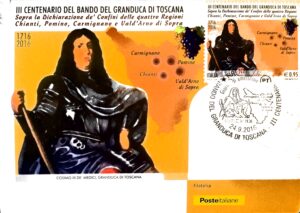Considering DOCG, DOC and IGT wines, the designation of origin certifications for Italian wines are now over 500. In almost sixty years of existence, the law that established them way back in 1963 has produced a mapping of the national territory which has involved all the regions and all the provinces, so much so that today there are those who argue that mergers and cuts would be necessary to simplify an all too rich picture.
A further DOC, precisely in Tuscany, where there are dozens of them, would therefore seem apparently redundant or unnecessary, and in any case against the trend. However, this is probably not the case. At least, if we refer to Valdarno di Sopra DOC, which was established a few years ago.
There are numerous sources that attest that the cultivation of vines and the production of wine were widespread practices in this area since ancient times. In fact, around 390/370 B.C., in Southern and Central Etruria, the Etruscan populations were capable of carrying out an archaic process of vinification of the grapes.
Wine production in the area between Arezzo and Florence is documented in the 1st century A.C. by Pliny the Elder in his Naturalis Historia, which indicates this territory among the best for wine production of the time, with references to the numerous varieties of grapes grown.
References that can be connected to Valdarno di Sopra can be found in the Florentine Land Registry Decree of 1427, which is not only an index of technical / land-registry and geographical statements, but also includes evaluations of merit on the quality of the product obtained in the various areas and on its prices, effectively drawing up a ranking of merit and price of the wines of the time.
But it is with the agricultural transformations that took place in the period of the 16th / 18th century that a first shift towards specialized or closed vineyards takes place and a more scientific and entrepreneurial viticulture develops, with the increase in vine cultivation, also as a consequence of the great demand for some renowned Tuscan wines and in particular typical of the Valdarno area.


